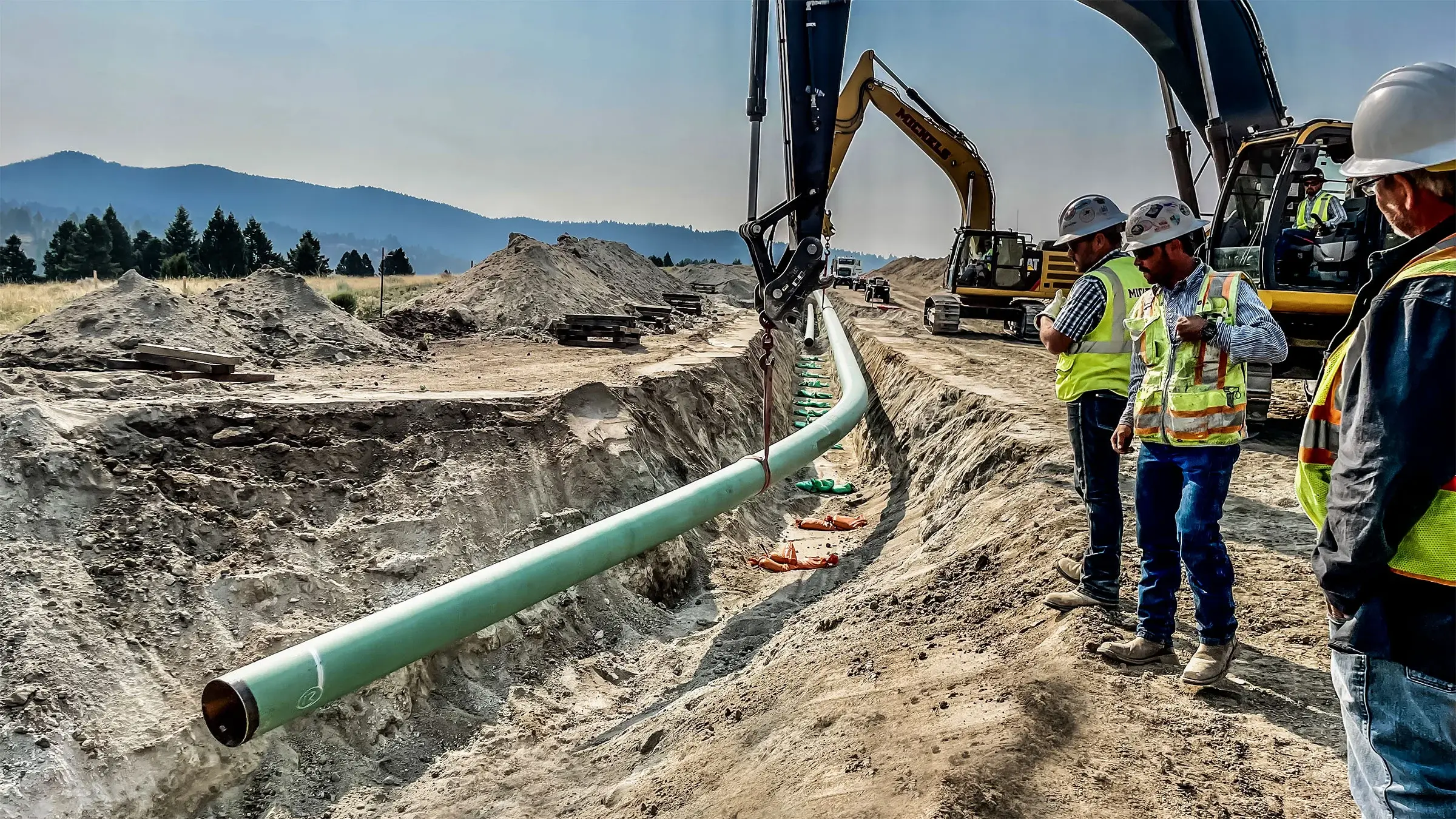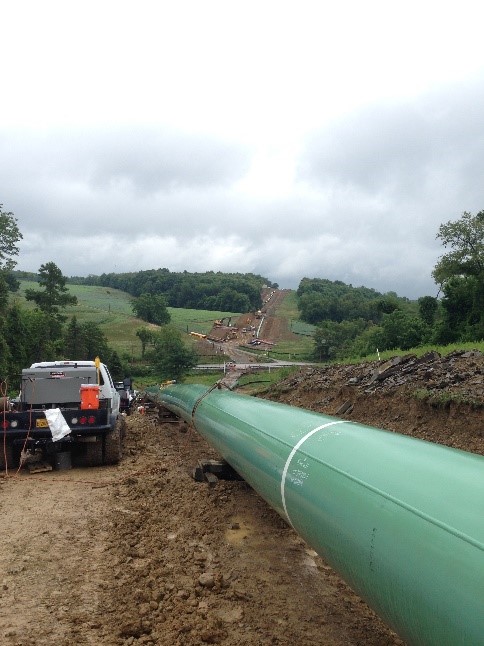Everything You Need to Know About Creek Pipe pipeline construction
Wiki Article
Understanding the Essentials of Pipes Installation: What You Required to Understand About the Process
Appropriate pipe installation is crucial for any type of plumbing system. It requires cautious factor to consider of different variables, including product option and adherence to regional policies. A well-planned design can stop concerns like pressure loss, while the right tools guarantee efficient signing up with methods. Nonetheless, even experienced installers can make common blunders. Understanding these essentials can lead to a more reliable and resilient system, triggering a more detailed look at the crucial elements included in the procedure.Picking the Right Materials for Pipe Installation
When taking into consideration pipe installation, the choice of ideal products is vital to making sure toughness and performance. Different products are readily available, each offering one-of-a-kind advantages and factors to consider. As an example, PVC pipes are lightweight, immune to rust, and cost-effective, making them ideal for residential pipes. Alternatively, copper pipelines, recognized for their long life and ability to endure heats, are often liked for home heating systems.Additionally, galvanized steel pipes offer stamina and durability, appropriate for sturdy applications, although they are vulnerable to corrosion over time.For underground installments, polyethylene pipes are favored as a result of their flexibility and resistance to stress cracking. Proper material choice relies on the specific needs of the task, including stress ratings, temperature level variations, and the chemical nature of the liquids being carried - Creek Pipe pipeline construction. Ultimately, educated choices concerning pipe materials add considerably to the overall success and longevity of pipes systemsUnderstanding Local Building Ordinance and Regulations
How can understanding local building regulations and laws effect pipe installation? Knowledge with these codes is necessary for guaranteeing that pipe installations are secure, compliant, and efficient. Regional building regulations describe particular needs relating to products, installation techniques, and security procedures, which should be stuck to to avoid potential lawful problems and pricey fines.Failure to comply can lead to inspections being failed, hold-ups in project completion, and even mandated elimination of improperly mounted pipelines. Additionally, comprehending zoning legislations and laws can influence the kind of products allowed, as well as the approaches made use of for installation.Contractors and homeowners alike need to invest time in examining neighborhood laws before commencing any type of installation job. This aggressive approach not only promotes safety however also boosts the total high quality and longevity of the pipes system, ultimately promoting long-lasting functionality and contentment.Planning Your Pipe Layout and Style
Appropriate planning of pipe layout and layout is necessary for achieving an effective plumbing system. This procedure starts with evaluating the specific needs of the area, thinking about the location of components and devices. Accurate measurements ensure that pipelines are appropriately routed, minimizing bends and turns that can lead to press loss.Consideration of the circulation prices and the sorts of materials utilized is important, as various products have differing durability and compatibility with plumbing systems. Furthermore, the designer must account for future expansions or adjustments to the format, enabling flexibility in case of renovations.Efficient water drainage and air flow are likewise considerable parts of the design, as they protect against blockages and ensure appropriate waste elimination. Partnership with local building codes assures conformity and safety, which is paramount in any pipes installation task.Essential Devices and Tools for Installation
Effective pipe installation depends upon having the right devices and tools available. Essential tools consist of pipe cutters for tidy cuts, wrenches for tightening up installations, and pliers for gripping and transforming pipelines. In addition, a level guarantees pipes are installed uniformly, while a measuring tape help in accomplishing precise lengths.For details products, a welding torch might be necessary for copper pipelines, while a PVC cutter is necessary for plastic alternatives. Security devices, such as gloves and goggles, protects installers from prospective dangers throughout the process.A pipeline bender can be especially valuable for creating smooth curves without endangering stability, while a torque wrench assurances that connections are safeguarded to the maker's specifications.Having these devices easily available not only promotes a smoother installation process yet also adds to the overall resilience and functionality of the plumbing system. Correct equipment is vital in accomplishing lasting outcomes.Strategies for Correct Pipe Joining and Securing
Accomplishing a secure and leak-free link between pipes requires mindful focus to joining and sealing strategies. Various approaches exist, each fit to various pipe materials and applications (Creek Pipe Company). Welding is typically employed for metal pipelines, ensuring robust connections through warm blend. In contrast, plastic pipes take advantage of solvent concrete or blend welding, producing strong, irreversible bonds.Threaded connections are usual in both steel and plastic piping, needing precise placement and the use of proper sealants, such as Teflon tape or pipe dope, to avoid leakages. Compression installations provide one more alternative, where mechanical stress protects the pipelines together, making them quickly took apart for maintenance.Regardless of the approach picked, correct preparation is necessary. This includes cleaning pipe finishes and ensuring they are cost-free from debris. Carrying out these strategies vigilantly will enhance the long life and dependability of the pipe system, ultimately contributing to its efficient performanceCommon Errors to Prevent Throughout Installation
During pipe installation, preventing usual errors is important for making sure a reliable and effective system. One frequent error is stopping working to measure and reduce pipelines accurately, which can lead to improper fittings and leakages. In addition, disregarding to examine the compatibility of products can result in deterioration or various other damage over time. Poorly protecting joints and connections can additionally create weak points in the system, creating prospective failures.Another typical blunder is forgeting the value of incline and water drainage; pipelines must be installed at the right angle to help with proper circulation. Inadequate support for pipelines can lead to drooping and anxiety, affecting the honesty of the system. Inevitably, ignoring neighborhood codes and regulations can lead to pricey rework and safety risks. By knowing these pitfalls, installers can considerably boost the resilience and efficiency of pipe systems.Maintenance Tips for Lasting Pipe Solutions
To assure the durability of pipe systems, normal examinations and cleansing are crucial practices. These steps help recognize prospective issues before they escalate right into major troubles. Additionally, employing appropriate insulation strategies can better protect pipelines from temperature level fluctuations and environmental factors.Routine Assessments and Cleansing
Routine inspections and cleaning are essential for keeping the durability and efficiency of pipe systems. Routinely taking a look at pipelines for indicators of rust, leaks, or obstructions can assist recognize potential concerns prior to they escalate into costly repair services. Cleaning pipes periodically eliminates buildup that can limit flow and advertise wear and tear. It is advisable to set up inspections a minimum of yearly, however much more regular checks may be essential in high-usage atmospheres. Making use of expert services for extensive Creek Pipe near me cleaning assurances that all debris is effectively cleared. In addition, maintaining records of inspections and maintenance activities help in tracking the system's health and wellness in time - Creek Pipe Company. By focusing on these methods, homeowner can improve the dependability and life-span of their pipe systemsProper Insulation Techniques
Reliable insulation strategies play a crucial duty in preserving the performance and longevity of pipe systems. Appropriate insulation lessens warm loss in hot water pipes and prevents cold in chilly water pipelines, considerably lowering energy costs and prospective damages. Typical materials used for insulation consist of fiberglass, foam, and rubber, each offering varying degrees of thermal resistance. It is important to ensure that insulation is used evenly, covering all exposed areas without voids. Furthermore, safeguarding insulation with proper bolts aids keep its position and efficiency gradually. Regular inspections ought to be performed to determine wear and tear, guaranteeing timely substitutes. By carrying out these methods, pipe systems can operate effectively and have an extensive life span, eventually benefiting both the environment and the homeowner.
Often Asked Questions
How Do I Identify the Appropriate Pipe Dimension for My Project?
Figuring out the proper pipe size involves assessing the job's circulation needs, pressure requirements, and the type of liquid being transferred. Consulting style standards and carrying out estimations warranties suitable performance and performance in the installation process.What Are the Ecological Impacts of Different Pipe Products?

Can I Set Up Pipes Myself or Should I Work with an Expert?
The inquiry of whether to mount pipelines individually or hire a specialist commonly depends upon the individual's ability degree and task complexity. A professional may ensure compliance with laws and decrease possible long-term concerns.
How Much Time Can I Anticipate My Pipe Installation to Last?
The durability of pipe installation differs considerably, usually lasting 20 to 100 years, depending upon materials, installation top quality, and upkeep. Normal evaluations and correct care can improve durability and prevent early failures.What Are the Indicators of a Failing Pipe System?
Signs of a falling short pipe system include regular leaks, uncommon water pressure adjustments, stained water, mold development, and consistent dampness. Property owners need to keep track of these signs to prevent costly damage and warranty prompt repairs are made.Report this wiki page